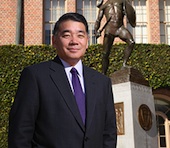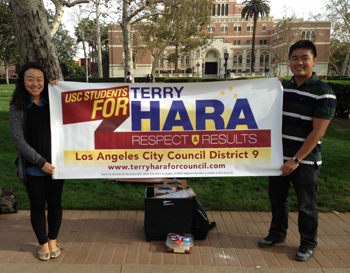Although President Barack Obama’s announcement of across-the-board sequester cuts just recently sparked controversy. But low-income families in Los Angeles have been feeling the reverberation of federal and statewide budget cuts since 2008. In the past few years, Los Angeles County has lost 22,000 licensed child care slots.
According to a recent study by the Advancement Project, a policy change organization headed by Los Angeles activists Molly Munger and Connie Rice, just a 10 percent funding cut would eliminate an additional 59 percent of child care seats currently available for low-income families.
This lack of affordable and trustworthy child care can affect families in multiple ways. Parents who cannot work feel the most immediate impact. Young parents unable to acquire the proper skills to improve their job prospects also suffer, according to Jacquelyn McCroskey, professor in child welfare at the University of Southern California. McCroskey has dedicated over two decades to improving outcomes for families and children in Los Angeles County.
Crystal Stairs, a nonprofit organization, also hopes to help the families affected. The organization started 30 years ago with two mothers who wanted to improve the lives of families in Los Angeles. The nonprofit is part of an advocacy project called Community Voices that includes other child care service providers such as Pathways, Advancement Project and First 5 LA.
“In the area that we serve, there is multi-generational poverty,” said Jackie Majors, CEO. “We want to provide services so they can end the poverty cycle.”
Majors’ career in child care services spans 25 years, but most of the work was in the private sector, providing services to mainly affluent families.
“Although I loved what I did for 17 years, I really think that was all about preparing me for this work,” said Majors. “Those families were going to make it no matter what I did. The families that I serve now don’t have any other resources besides us.”
Majors said her greatest satisfaction comes from receiving a letter from a family saying that with a better paying job, they no longer qualify for Crystal Stairs’ services.
In addition to the immediate impact on parents, there are often more long-term consequences for children when there is a lack of child care services.
“It also has impact on the potential for children to be as ready for school as they could be,” said McCroskey. “They won’t be able to practice early learning skills and enhance their cognitive abilities.”
These negative consequences disproportionately affect low-income families. On average, each zip code in Los Angeles lost 170 child care seats beginning in 2008. However, many zip codes in South Los Angeles and Compton lost more than 300 licensed seats each.
When Majors became CEO of Crystal Stairs two years ago, budget cuts forced her to terminate 3,000 contracts for families. However, one of Majors’ goals as CEO includes diversifying the organization’s funding to better serve families. The organization has an annual fundraiser and strives for more outside funding.
Despite budget cuts, this summer Crystal Stairs added more child care services for residents in Compton and South L.A. Although this may seem like a step in the right direction, Majors does not rejoice in this success. She believes Crystal Stairs’ expansion is an indicator of the failure of other child care service providers.
Majors and McCroskey encourage child care service providers to unite rather than view each other as competition and act territorially.
McCroskey hopes that advocates, families and child care service providers can be more organized to fight back against state or federally proposed budget cuts.









 Mural at Belmont High painted by students and City Year corps members.
Mural at Belmont High painted by students and City Year corps members.  When Terry Hara was posing as an undercover cop as the real-life version of “21 Jump Street” in the 1980s, he never imagined he would make an attempt to play a new role over three decades later. As the current Los Angeles Police Department Deputy Chief, Hara believes he has what it takes to be the next Ninth District City Council member.
When Terry Hara was posing as an undercover cop as the real-life version of “21 Jump Street” in the 1980s, he never imagined he would make an attempt to play a new role over three decades later. As the current Los Angeles Police Department Deputy Chief, Hara believes he has what it takes to be the next Ninth District City Council member.  “I believe that Terry really does have the district’s best interest at heart and I wish him the best of luck with the rest of his campaign,” said Vanessa Wilkins, a sophomore undergraduate at USC.
“I believe that Terry really does have the district’s best interest at heart and I wish him the best of luck with the rest of his campaign,” said Vanessa Wilkins, a sophomore undergraduate at USC. 




